
Meniscal Tear Causes, Presentation and Treatment Bone and Spine
The lateral and medial menisci are crescent-shaped fibrocartilaginous structures that collectively cover approximately 70% of the articular surface of the tibial plateau and primarily function in load transmission and shock absorption through the tibiofemoral joint.
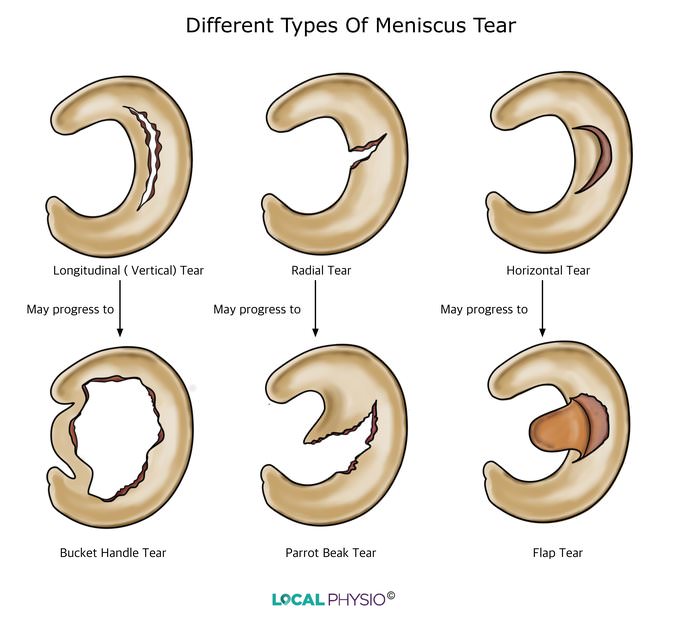
Meniscus Tear Local Physio
Download scientific diagram | Grading scale for meniscal tears on MRI. Grade 0 is a normal meniscus. Grades I and II have an intrameniscal signal that does not abut the free edge. Grade III has a.

Grading of meniscal tears Elearn Radiology
Meniscus tears are a common orthopedic pathology and planning a single, effective treatment is challenging. The diagnosis of meniscal tears requires detailed history-taking, physical examinations, special diagnostic tests, and most likely magnetic resonance imaging (MRI) to confirm the lesion.

Illustrations of the meniscal root tear classification system in 5... Download Scientific Diagram
Occasionally, meniscal tears can be difficult to detect at imaging; however, secondary indirect signs, such as a parameniscal cyst, meniscal extrusion, or linear subchondral bone marrow edema, should increase the radiologist's suspicion for an underlying tear. Awareness of common diagnostic errors can ensure accurate diagnosis of meniscal tears.

Types of Meniscal Tears
The menisci — the medial meniscus and lateral meniscus - are crescent-shaped bands of thick, rubbery cartilage attached to the shinbone (tibia). They act as shock absorbers and stabilize the knee. The medial meniscus is on the inner side of the knee joint. The lateral meniscus is on the outside of the knee.

Grade 1 Meniscal signal or tear( MRI finding) and Grade 2 Meniscal Tear YouTube
The meniscus a tissue that sits between the femur and tibia bone. It can tear in many different ways, and no two tears ever look the same. There are a few varieties frequently seen in MRI reports. Radial meniscus tear A radial tear is a tear across the fibers of the meniscus.
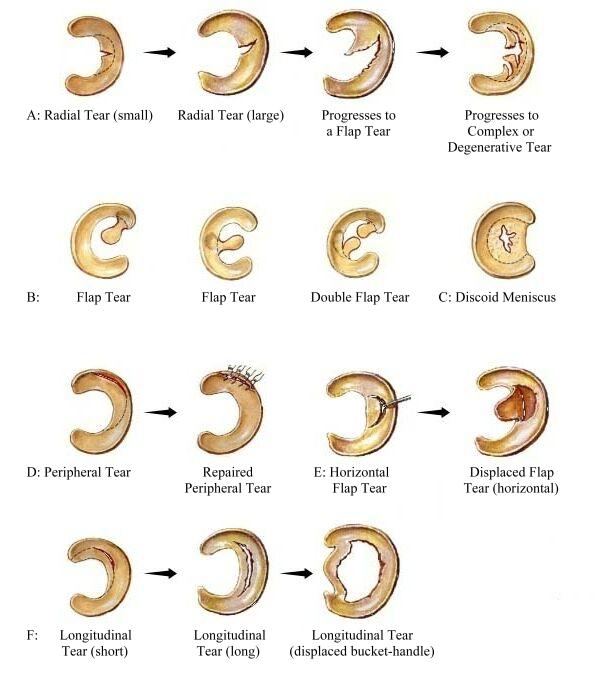
Mediale meniscus Creative Saplings
A meniscus root tear may occur in circumstances that appear benign, such as walking up a flight of stairs or stepping off a curb. It also can occur with a sports activity such as pivoting in pickleball or lifting a heavy kayak into the water. Athletes also incur meniscus root tears with an accompanying ACL tear in a more traumatic injury.
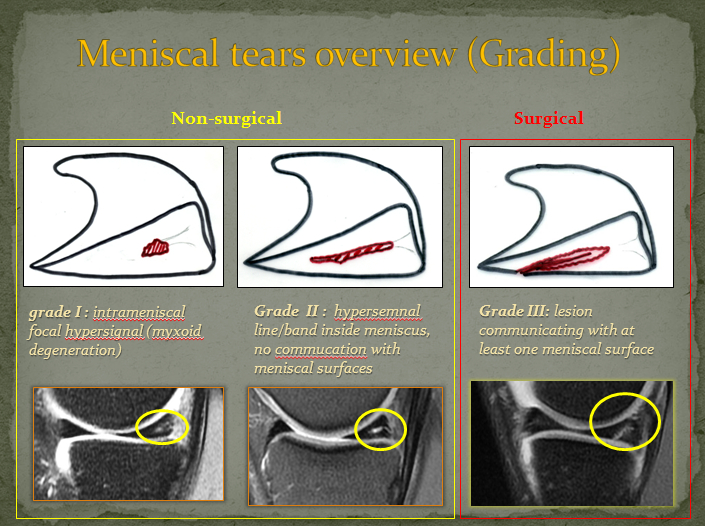
EPOS™
Normal meniscus has uniformly low signal intensity on T2-weighted images (T2W). Grade I and II lesions can be a normal appearance of ageing in older patients. Classifications, online calculators, and tables in radiology. Martin C, Crues JV 3rd, Kaplan L, Mink JH. Meniscal tears: pathologic correlation with MR imaging. Radiology. 1987 Jun;163.

Meniscal injury classification Download Scientific Diagram
Diagram MRI grading system for abnormal high meniscal signal intensity reported by Lotysch et al. Normal meniscus should appear as a uniform low-signal (dark) triangular structure in sagittal MRI images. normal: No abnormal signal intensity 1: small focal area of increased signal intensity, with no extension to the articular surface
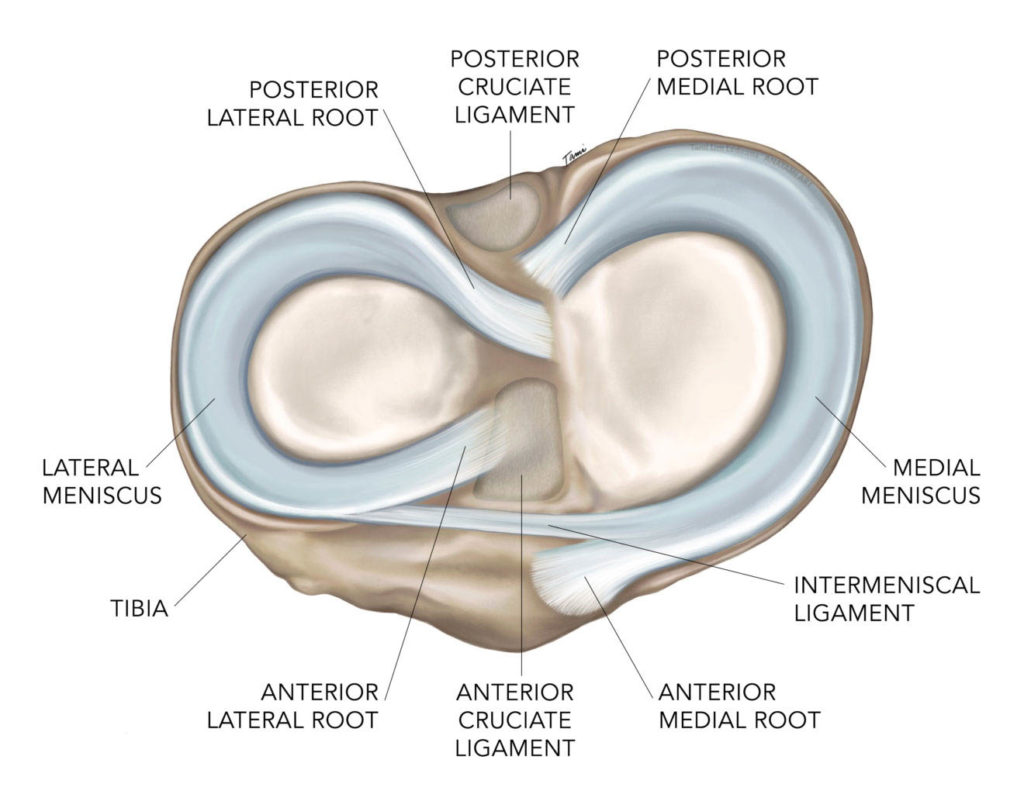
Meniscal Root Tears Dr. Chris Jones Colorado Springs, CO
Classification Grade 1 to 3 have been described on MRI: grade 1: small focal area of hyperintensity, no extension to the articular surface grade 2: linear areas of hyperintensity, no extension to the articular surface 2a: linear abnormal hyperintensity with no extension to the articular surface

MR Imagingbased Diagnosis and Classification of Meniscal Tears RadioGraphics
Meniscal tears are the failure of the fibrocartilaginous menisci of the knee. There are several types and can occur in an acute or chronic setting. Meniscal tears are best evaluated with MRI. Pathology
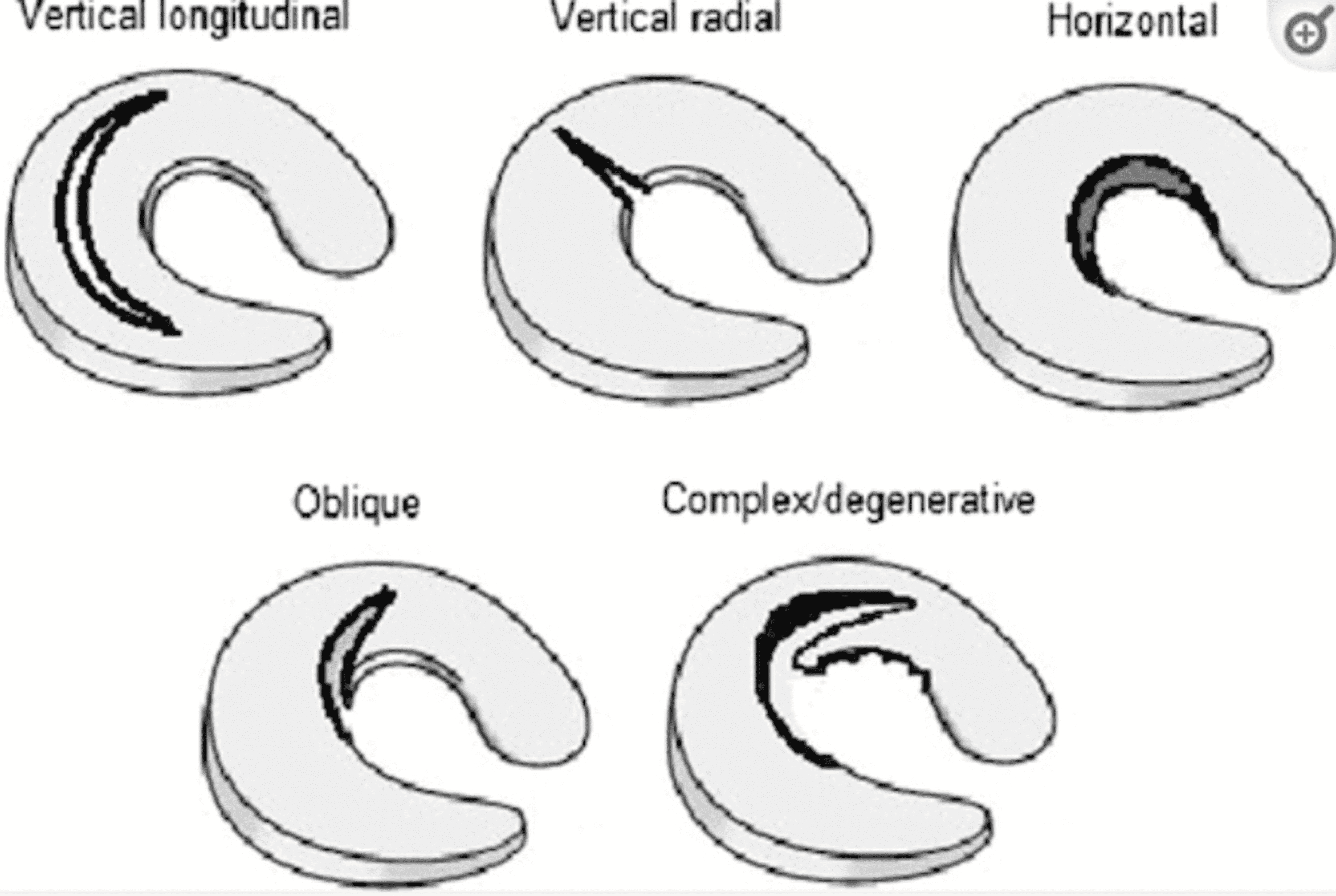
Cureus Meniscus Tear Pathology, Incidence, and Management
Meniscal tears are common sports-related injuries in young athletes and can also present as a degenerative condition in older patients. Diagnosis can be suspected clinically with joint line tenderness and a positive Mcmurray's test, and can be confirmed with MRI studies.

Meniscus Tears Florida Orthopaedic Institute
Meniscal injuries are a common problem in sports; they are the most frequent injury to the knee joint. Such injuries are especially prevalent among competitive athletes, particularly those.

ISAKOS classification of meniscal tears—illustration on 2D and 3D isotropic spin echo MR imaging
The factors considered were age, sex, joint line tenderness, mechanical symptoms, widest tear gap width on sagittal MRI, cartilage lesion grade, discoid meniscus, tear site, and joint alignment.
/GettyImages-137278351-569c02f95f9b58eba4a700f8.jpg)
6 Types of Meniscus Tears and Locations
Though initially described as a functionless remain of a leg muscle [ 1 ], extensive scientific investigations in recent decades have described the meniscus as a vital part of the knee joint with anatomical, biomechanical, and functional importance [ 2 ].
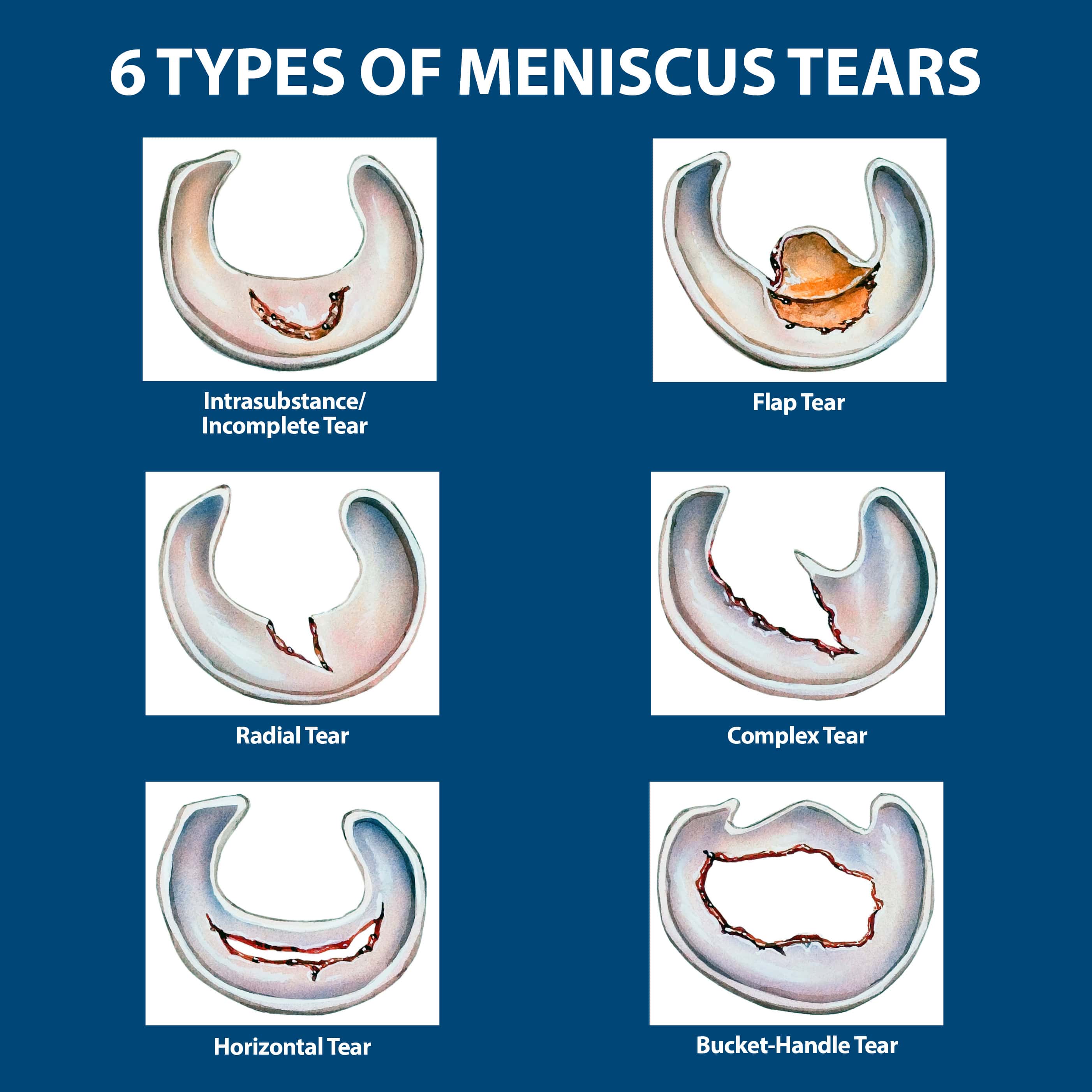
Meniscal Tear Types
. MRI grading system classifies tears based on their appearance on an MRI scan (Fig. 8). Grade 0 represents an intact, normal meniscus. Grade I and Grade II signals do not intersect.